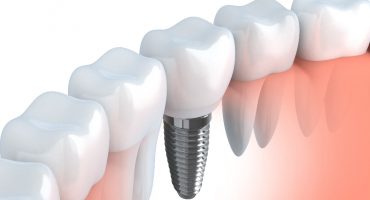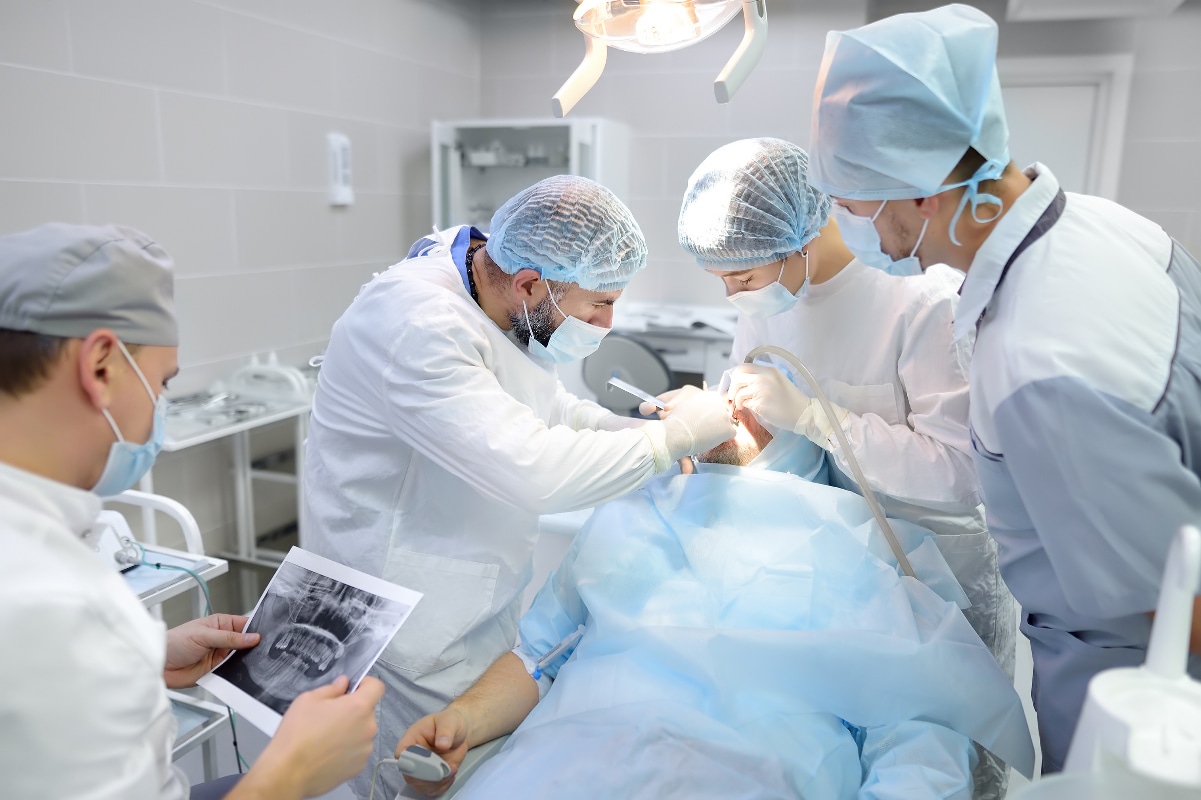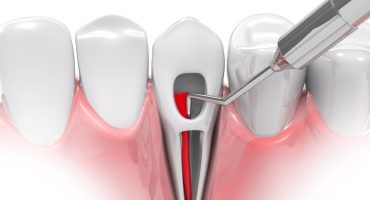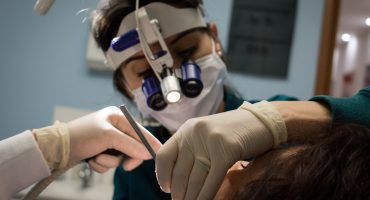Before an implant, i.e. firmly anchored dentures, can be used, there are preparatory measures for the intervention of the implantologist. Distraction osteogenesis or callus distraction is an operative procedure in the field of oral and maxillofacial surgery for new bone formation. You can read about exactly what this intervention is, how it works and what the risks are.
What is callus distraction / distraction osteogenesis?
The literal translation of the term distraction osteogenesis (also called callus distraction) is "new bone formation by pulling apart". In this procedure, the oral surgeon makes use of the principle that is also used in the healing of bone fractures: The fracture gap is automatically filled by the body again with bone substance and the bone fragments grow together again over the course of several weeks. In distraction osteogenesis, a bone cleft is thus surgically generated, in order to subsequently achieve extension of the bone.
And this happens as follows: Everywhere in the human body are the so-called osteoblasts, that is, cells that specialize in the production of bone substance. They first form callus - bone tissue that is transformed into mineralized bone within a few weeks. Only the mineralized bone is visible on x-rays, but not callus.
When and why is distraction osteogenesis required?
Callus distraction is used in dental implantology- especially if there is not enough alveolar bone. The alveolar bone is the area in the jaw where the tooth roots were originally anchored. It rests on the jaw base and must be sufficiently strong and robust to hold an implant permanently. Distraction osteogenesis is performed to increase the amount of bone that once carried a tooth. Only then can the dentist or oral surgeon place the implants.
The dental implant is anchored in the jawbone - there must be enough bone material available.
What are the arguments against distraction osteogenesis?
If oral hygiene is severely limited (for example, due to old age) and can not be improved, distraction osteogenesis is not recommended, since in this case there is an increased risk of infection. Even if it is foreseeable that the patient does not comply with the necessary rules of conduct (such as nicotine or alcohol addiction), most doctors do not perform callus distraction. The same applies to:
- ill-adjusted diabetes
- poor immune defense
- simultaneous use of immunosuppressive drugs
- concurrent radiotherapy
How does distraction osteogenesis work?
Distraction osteogenesis takes place in several phases, requiring two surgical procedures. Both interventions take place under local anesthesia. During the first operation, the surgeon first cuts through the oral mucosa, then the jawbone and, if necessary, cuts out a piece of bone to create a split bone. This process is called osteotomy. He then uses screws or special pins to fix a distractor, that is, an apparatus with which he can exercise a controlled pull on the jawbone over the next few weeks. Then the wound is sutured.
This is followed by a rest period of five to seven days to give the body enough time to heal the wound. Only then will the distractor be activated. The required screw protrudes out of the oral mucosa. By turning the screw, the surgeon can remove fracture surfaces by 0.8-1 mm per day. The setting of the distractor must be well balanced, because: If the distance is too large, the osteoblasts can not reproduce sufficient bone substance. If the distance is too small, premature ossification takes place. The fragments are pulled apart until the alveolar bone has reached the desired height.
The postponement phase is followed by another rest period of ten to twelve weeks. This is necessary to stabilize the achieved state. An X-ray is taken to check, followed by removal of the distractor, again under local anesthesia. About two weeks later, the dentist / maxillofacial surgeon can place the implants.
The correct behavior after the operation
After the operation, you should take care of yourself and eat only soft food - especially after the initial surgery. After the second surgery, you only have to give up solid food for a few days. In addition, careful oral hygiene is essential. Your doctor will tell you how to cleanse and care for your teeth and gums after your callus distraction. Mostly disinfectant rinses are used because the operating area could be irritated by a toothbrush. Alcohol and caffeine-containing drinks are as taboo after the procedure as sports, otherwise there is a risk of rebleeding.
What risks exist?
As with any surgical procedure, it can also lead to infections during callus distraction. In addition, pain can be expected at times, but it can be alleviated with painkillers. Other possible risks include:
- Nerve irritation
- Soft tissue irritation
- Wound healing disorders
The procedure has proven itself
Distraction osteogenesis occupies an established place in oral and maxillofacial surgery, more precisely in dentistry. Even if the jawbone has declined greatly, the procedure allows the stable anchoring of necessary implants. The procedure is considered very safe - but patients need to be patient, as the whole process takes several months.
Weitere Beiträge

Mini Implants
Mini implants - also known as MDI (Mini Dental Implant) - promise firm hold and stability for artificial dentures. They are inexpensive, quickly used and immediately loadable. Mini implants offer an alternative to traditional dental implants for some patient groups.



